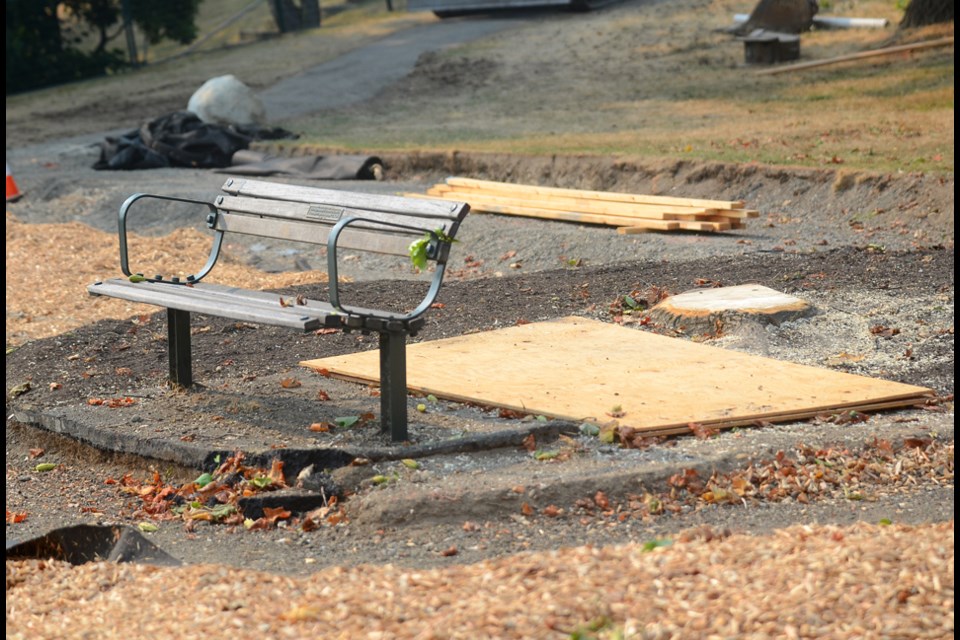Lifelong Burnaby resident Fred Unger loved the shady playground beside his four-year-old son’s preschool next to Parkcrest Elementary in North Burnaby.
Besides providing a nice place for his son to play, it included a bench under the trees where his 75-year-old mom could sit.
Last week, however, Unger arrived to find two large shade trees cut down and the playground laid bare to the blazing sun.
“It’s shocking,” he told the NOW. “All the shade is gone; the kids are now in full sun. It just seems like an insane decision to me. Who makes decisions like that?”
The trees, two mature Liriodendron or tulip trees, were taken down by the city as part of the playground’s redevelopment, according to Dave Ellenwood, director of parks, recreation and cultural services for the city of Burnaby.
“They were seeping aphid sap onto the equipment,” he said. “That’s why they needed to be removed because they rendered the play equipment unusable and the new stuff would be unusable.”
Ellenwood said school district officials had told the city the sap was causing problems, like kids sticking to the slide.
But Unger wasn’t satisfied with that explanation or the level of consultation with his son’s preschool, Parkcrest Children’s Centre, about the removal of the trees.
“I go to that park all the time with my son, and I spoke to the director of the preschool who’s worked there for 11 years. Sap – we don’t even know what they’re talking about,” he said. “What? Do their hands get sticky? This is a dumb explanation. … I’m annoyed and I want nice trees back in there.”
The trees will be replaced, according to Ellenwood, but not until fall and the end of the hot, dry weather.
“We’re not going to plant them now because they’ll die,” he said.
The city will replace the two mature trees with four new trees of a “more appropriate species” – probably fast-growing maples – according to the parks director.
Maples are more resilient to aphid infestation, he said, and better able to withstand the kind of hot temperatures the Lower Mainland has seen in the last few weeks.
“It’s unfortunate at this time of the year when it has the most impact – you want shade – but these trees were not the appropriate species, and they caused a problem, and I think the two-to-one replacement ratio is something that’s responsible to do,” Ellenwood said.
Honeydew facts:
- The sticky mess dripping from certain trees is called honeydew and is produced by aphids
- Aphids are tiny soft-bodied insects that plug their mouthparts into the vein of a tree or other plant and let a steady stream of sweet sap flow into their bodies.
- Tree sap contains a lot of sugar but not many of the nutrients aphids need to make protein, so they consume much more than they need.
- The excess sap flows out of the other end of the aphids and onto cars, playground equipment, etc.
- Most aphids can only feed on one species of plant or tree and will not infest other types of plants.
- Honeydew is water soluble and can be hosed of cars and trees.
- Aphids can be controlled with predatory insects, like ladybugs, or with insecticides.



